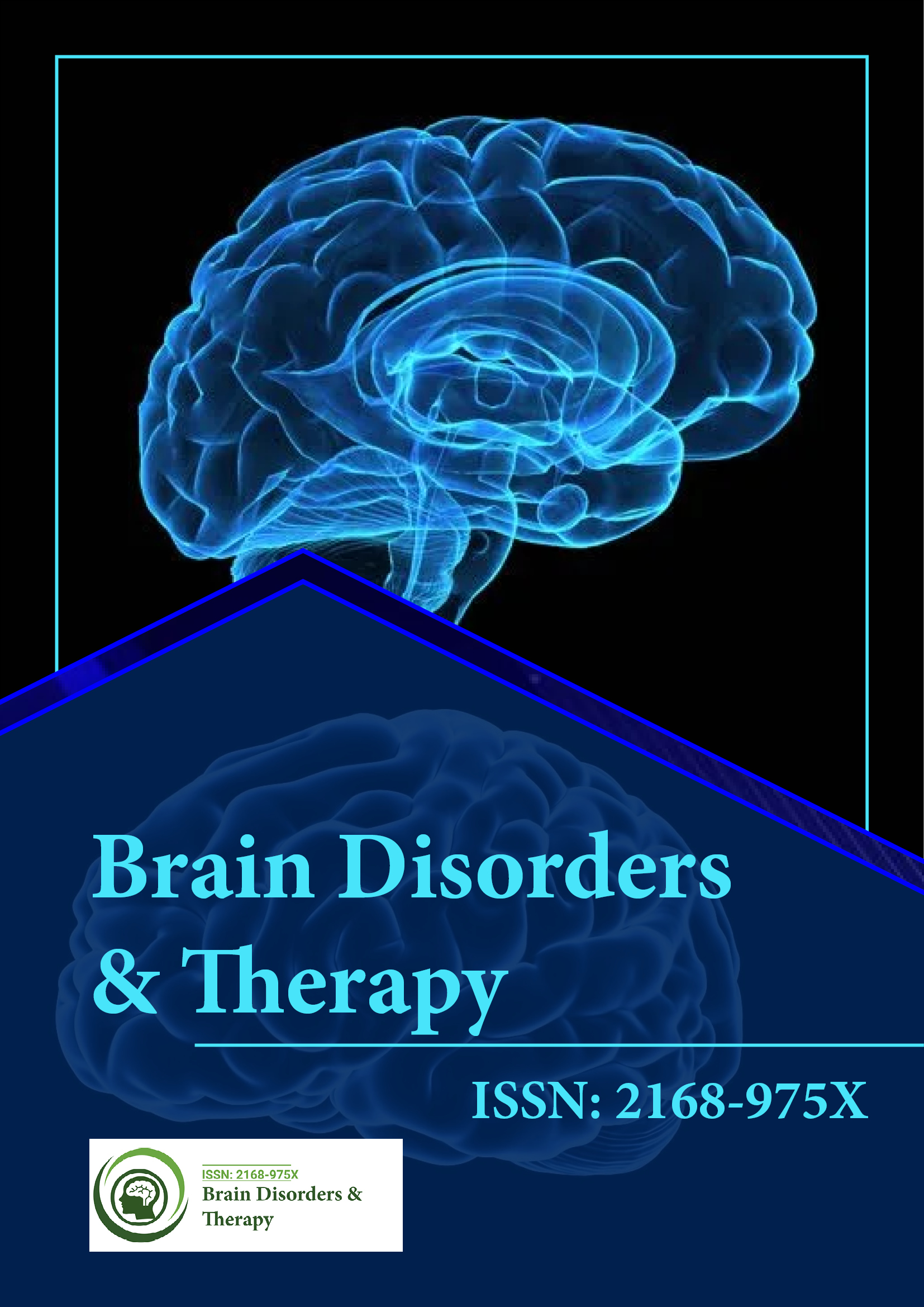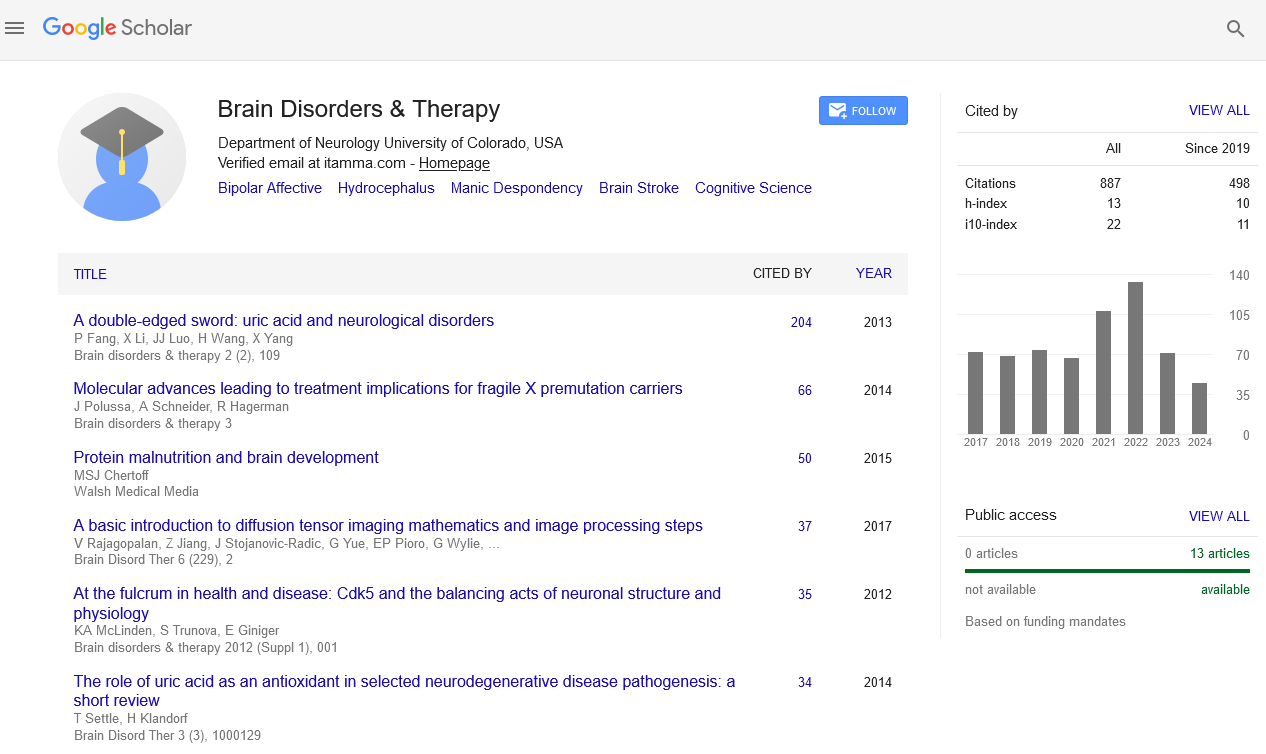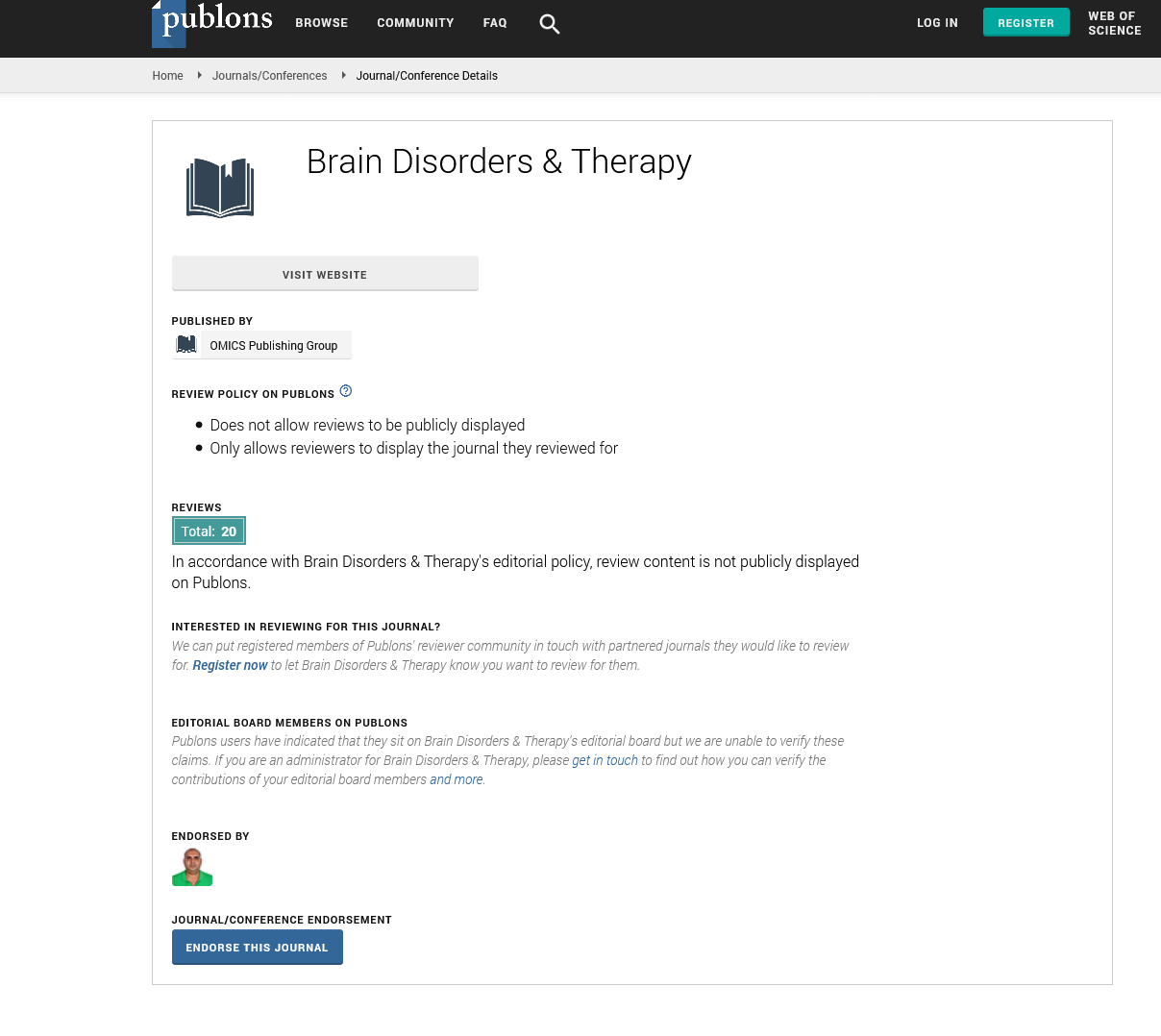Indexed In
- Open J Gate
- Genamics JournalSeek
- JournalTOCs
- RefSeek
- Hamdard University
- EBSCO A-Z
- OCLC- WorldCat
- Publons
- Geneva Foundation for Medical Education and Research
Useful Links
Share This Page
Journal Flyer

Open Access Journals
- Agri and Aquaculture
- Biochemistry
- Bioinformatics & Systems Biology
- Business & Management
- Chemistry
- Clinical Sciences
- Engineering
- Food & Nutrition
- General Science
- Genetics & Molecular Biology
- Immunology & Microbiology
- Medical Sciences
- Neuroscience & Psychology
- Nursing & Health Care
- Pharmaceutical Sciences
Image guided surgery using neuronavigation system in resection of cerebral gliomas involving eloquent cortical areas
International Conference on Neuro Oncology and Rehabilitation
July 21-22, 2016 Brisbane, Australia
Amir Nikouei, Afsoun Seddighi and Amir Saied Seddighi
Shahid Beheshti University of Medical Sciences, Iran
Scientific Tracks Abstracts: Brain Disord Ther
Abstract:
Objective: Extent of tumor resection poses a special challenge for neurosurgeons. Image guided surgery (IGS) has become an established technology in surgical management of cerebral tumors, which provides detailed 3D localization of the lesion around important cerebrovasculature and tracts. Since there are few studies regarding using this technology as a part of standard care for patients with cerebral gliomas, we set out to determine whether IGS could improve extent of tumor resectionin patients with cerebral gliomas involving eloquent cortical areas along with more desirable prognosis. Materials & Methods: From January 2013 till October 2015, 26 patients with cerebral gliomas involving eloquent cortical areas were randomized equally into trial group (IGS) and control group (conventional surgery). Patients in trial group underwent functional multislice 3 Tesla Magnetic Resonance Imaging (MRI) and Diffusion Tensor Imaging (DTI) 48 hours before surgery. DTI datasets were merged with anatomical structures, and the relationship between the tumor and adjacent tracts were reconstructed for 3D visualization. Completeness of tumor resection, including volumetric analysis, was examined by early post-operative MRI. Results: The statistic analysis confirmed well balance of main variations in both groups. Average mean pre-operative tumor volume in trial and control group was 70.37±7.96 cm3 and 68.82±7.85 cm3 respectively. No significant difference was observed between pre-operative tumor volumes in both groups (P value>0.05). Early post-operative MRI revealed 4.11±2.92 cm3 and 8.78±4.79 cm3 as mean residual tumor volume in trial and control group respectively (P value<0.05). 11 patients (84.61%) in trial group experienced radical resection (>95%); however, radical resection was just achieved in 3 patients (23.07%) (P value<0.05). While there was no significant difference between mean Karnofsky Performance Scale (KPS) in both groups of patients before operation, 88.09±20.43 and 66.38±19.32 were recorded as mean KPS for trial and control group respectively (P value<0.05). In addition, excellent outcome ratio (KPS=90-100) was achieved in 76.92% of trial group, while this value was 30.76% in control group (P value<0.05). Conclusions: IGS using neuronavigation system combined with DTI allows 3D evaluation of the cerebral tumor and their adjacent structures, along with tract mapping for neurosurgeons. Furthermore, this technology can aid to plan the optimal trajectory and higher extent of tumor resection with minimal post-operative neurological deficits.
Biography :
Dr.Amir Nikouei is from Shohada Tajrish Neurosurgical Center of Excellence, Functional Neurosurgery Research Center of Shohada Tajrish Hospital, Shahid Beheshti University of Medical Sciences, Tehran, Iran.
Email: amirnikouei@sbmu.ac.ir


